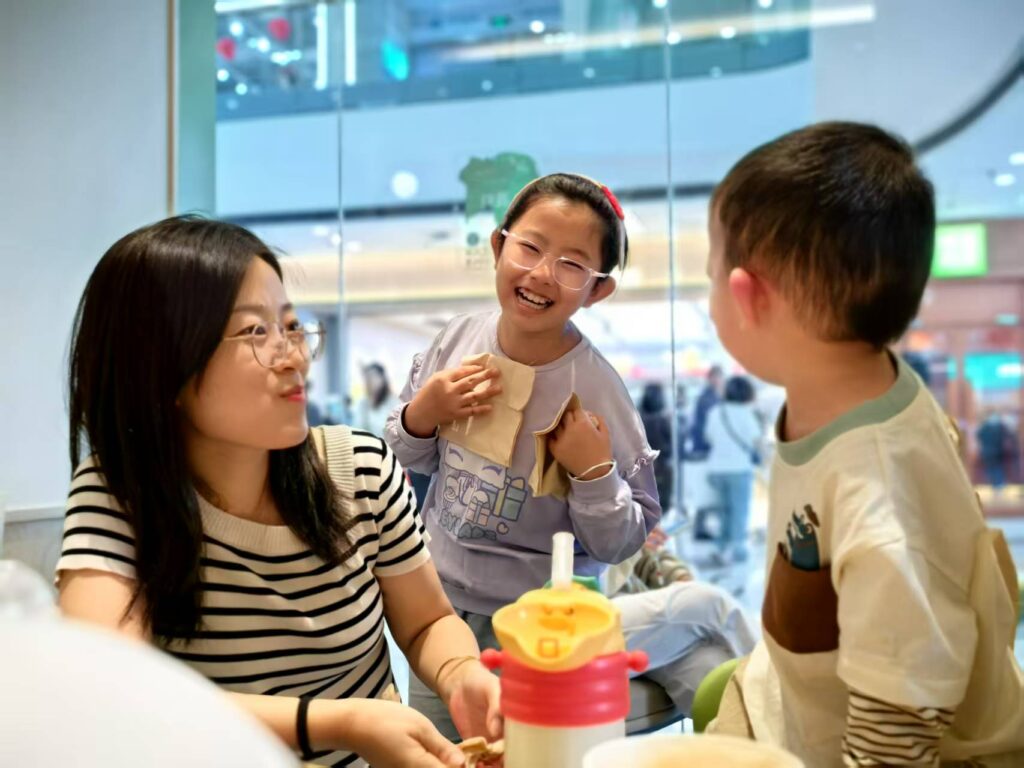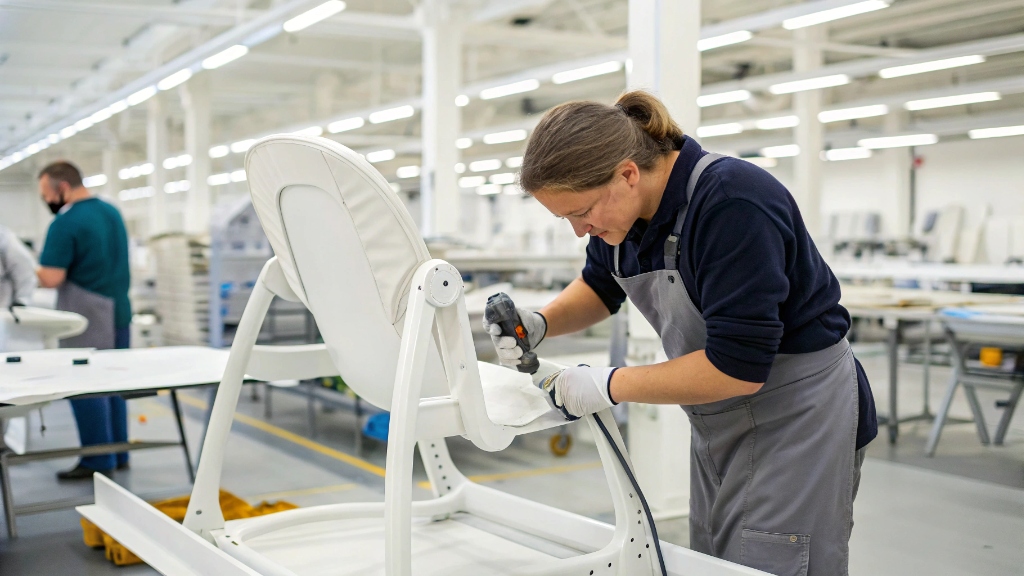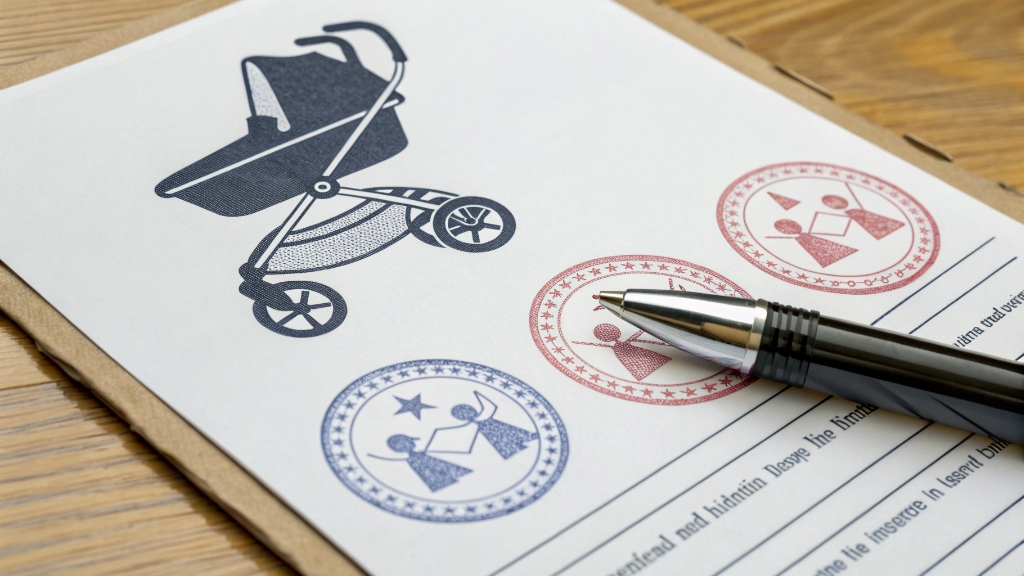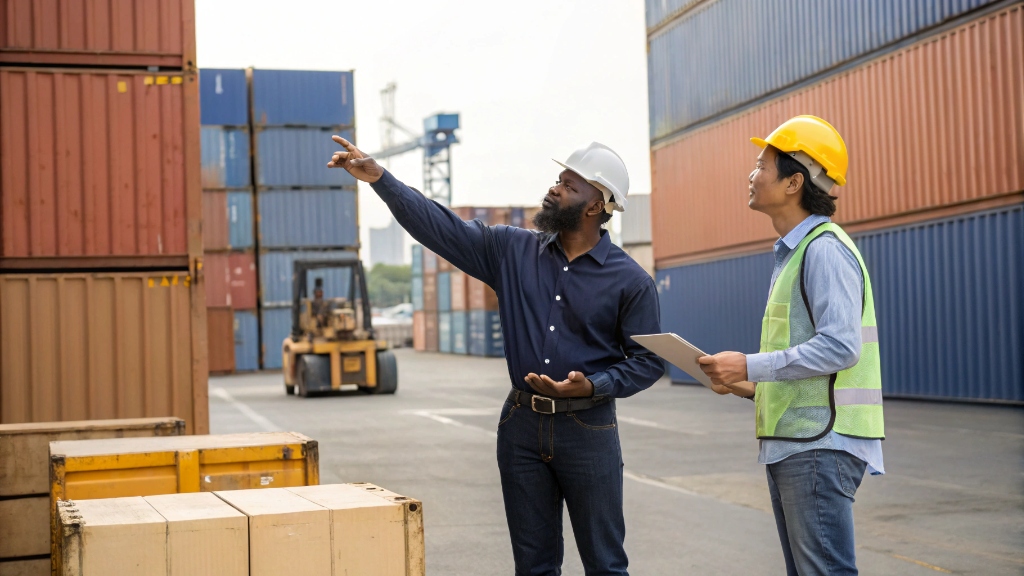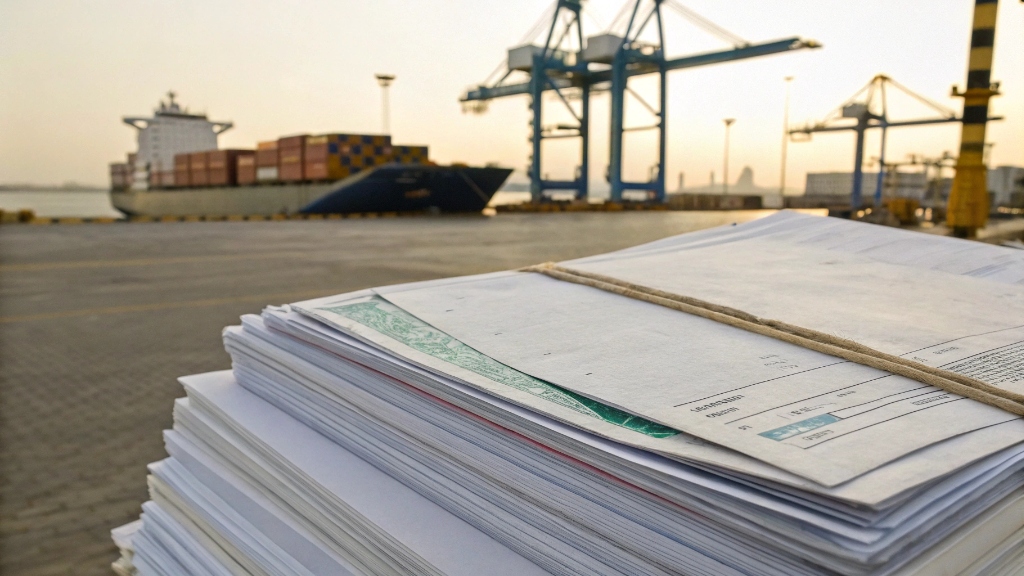Are you concerned about the environmental impact and safety of baby gear? It can be hard to know what is truly good for your child and the planet. Making informed choices helps.
To ensure strollers and high chairs are more environmentally friendly and safer, look for products with third-party safety certifications, eco-friendly material choices like recycled plastics or sustainably sourced wood, and manufacturers who hold environmental and social responsibility audits like ISO 14001 or BSCI.
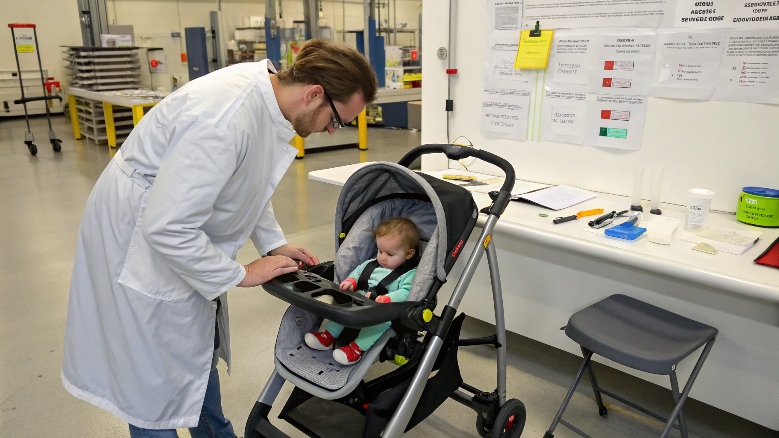
When I started my journey as a parent, I quickly learned that buying baby products was not just about picking what looked nice. It was about trust. I wanted to know the stroller my child sat in was not only sturdy but also free from harmful chemicals. I also thought about how these products affect the planet we are leaving for our kids. This means looking beyond the marketing claims. It means understanding the tests, the materials, and the companies behind the products. Let us dive into what makes a real difference.
What Items Are Third-Party Tested for Strollers and High Chairs?
Are you unsure what safety tests baby products go through? It is easy to feel confused by all the certifications. Knowing the specific tests helps you trust a product.
Third-party testing for strollers and high chairs typically covers structural integrity, chemical content, flammability of fabrics, and the absence of small parts that could pose a choking hazard. These tests ensure products meet strict national and international safety standards before they reach consumers.
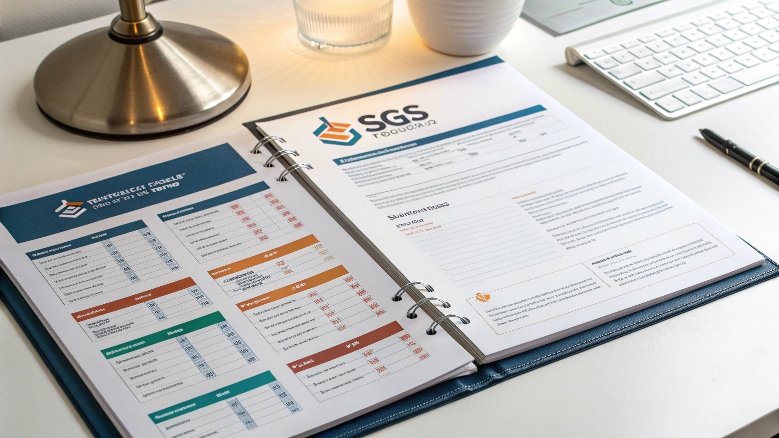
I remember picking up a stroller in a store and trying to wiggle every part, checking if it felt solid. But how could I really know if it was safe? This is where third-party testing comes in. It means an independent lab, not the factory itself, puts the product through rigorous trials. They check things that you cannot see or test just by looking. This independent check is very important. It tells you if the product is built to last and if it is free from hidden dangers. This process gives me peace of mind.
Structural Integrity
Structural integrity tests are critical for strollers and high chairs. These tests check if the product can handle daily use without breaking or collapsing. They include stability tests, ensuring the stroller does not tip over easily, even with a child in it. They also check the strength of the frame, joints, and locking mechanisms. For strollers, this means testing brakes for effectiveness and making sure folding mechanisms lock securely to prevent accidental collapses. For high chairs, tests ensure the chair remains stable when a child moves around and that the tray attachment is strong. They also test harnesses and buckles to ensure they hold the child safely in place, preventing falls. These physical stress tests mimic real-world use and abuse.
Chemical Content
Chemical content testing is about what goes into the materials themselves. This is especially important because babies often put things in their mouths. Labs test for harmful substances that can leach out of plastics, fabrics, or paints. Key chemicals tested include Bisphenol A (BPA), phthalates, and heavy metals like lead and cadmium. BPA is a chemical often found in plastics, and phthalates are used to make plastics softer. Heavy metals can be in paints or dyes. Products are also checked for flame retardants. Many countries have strict limits or bans on these chemicals in children’s products. This testing ensures that materials touching a child’s skin or mouth are safe.
Flammability and Small Parts
Flammability testing assesses how easily the fabrics and materials on the stroller or high chair catch fire and how quickly they burn. This is a very important safety measure. While no fabric is completely fireproof, products must meet certain slow-burn or self-extinguishing standards. This gives parents time to react in case of a fire. Small parts testing makes sure there are no tiny components that could break off and become a choking hazard for an infant or toddler. This includes loose buttons, caps, or decorative elements. Testers use specific tools, like small parts cylinders, to see if any piece can fit entirely into a child’s mouth. If it fits, it is considered a choking hazard.
| Test Category | Purpose | Examples of What is Tested | Relevant Standards (Examples) |
|---|---|---|---|
| Structural Integrity | Prevents collapse, tips, failures. | Frame strength, stability, brakes, harnesses. | ASTM F833 (Strollers), EN 1888, ASTM F404 (High Chairs), EN 14988 |
| Chemical Content | Ensures materials are non-toxic. | BPA, Phthalates, heavy metals, flame retardants. | CPSIA (US), REACH (EU) |
| Flammability | Measures fire resistance of materials. | Fabric burn rate, self-extinguishing properties. | 16 CFR Part 1610 (US), EN 71 |
| Small Parts | Prevents choking hazards. | Loose buttons, caps, broken pieces. | 16 CFR Part 1501 (US), EN 71-1 |
What Third-Party Audit Certificates Do Stroller and High Chair Factories Have?
Are you wondering how factories prove their quality and ethics? Factory audit certificates are not just paperwork. They show a commitment to good practices.
Stroller and high chair factories often hold third-party audit certificates like ISO 9001 for quality management, ISO 14001 for environmental management, and social compliance audits such as BSCI or SEDEX to demonstrate adherence to ethical labor practices and product quality standards.
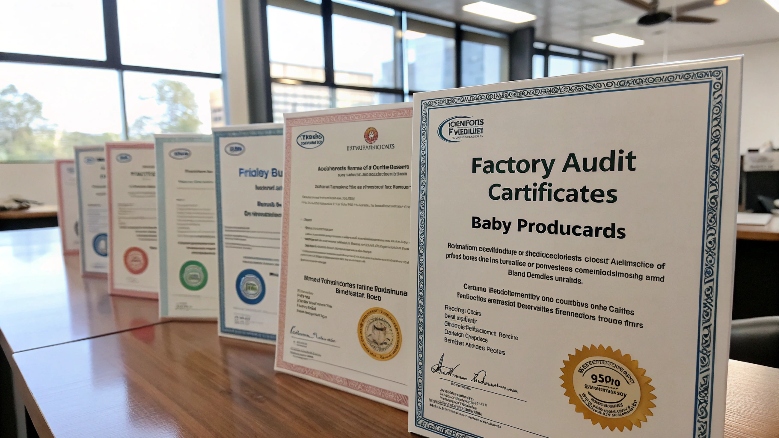
When I choose a product, I do not just look at the product itself. I also consider the company that made it. For me, it is important to know that the factory operates ethically and responsibly. I care about how they treat their workers and how they handle their waste. This is where factory audit certificates become very important. They are not product certifications. Instead, they are certifications for the factory’s management systems and operational standards. These certificates are a way for factories to show that they meet certain international benchmarks for how they do business.
ISO 9001 (Quality Management System)
ISO 9001 is a globally recognized standard for quality management systems. When a factory has ISO 9001 certification, it means they have a consistent process for making products. It shows they focus on meeting customer requirements and improving their processes. For strollers and high chairs, this means the factory has documented procedures for design, production, inspection, and delivery. It suggests that they track defects and take steps to reduce them. This helps ensure that each stroller or high chair produced meets a consistent level of quality. It makes it more likely that the product you receive will be well-made and reliable.
ISO 14001 (Environmental Management System)
ISO 14001 is an international standard for environmental management systems. A factory with this certification commits to reducing its environmental impact. This means they have systems in place to manage waste, conserve energy, reduce water usage, and control emissions. For a stroller or high chair factory, this could involve using more recycled materials in their plastics, optimizing their production lines to reduce waste, or using less energy in their manufacturing processes. It shows a commitment to more sustainable practices throughout their operations. This certification gives me confidence that the factory is trying to be a good steward of the environment.
Social Compliance Audits (BSCI, SEDEX, SMETA)
Social compliance audits focus on ethical labor practices. Organizations like BSCI (Business Social Compliance Initiative), SEDEX (Supplier Ethical Data Exchange), and SMETA (Sedex Members Ethical Trade Audit) conduct these. These audits check if a factory respects worker rights. They look at things like fair wages, safe working conditions, reasonable working hours, and if there is no child labor or forced labor. They also check for discrimination. For me, knowing a factory is audited for social compliance is very important. It means the people making the product are treated fairly. This ethical approach is a key part of choosing a responsible product.
| Audit Certificate | Focus | Benefit for Products/Consumers |
|---|---|---|
| ISO 9001 | Quality Management System | Consistent product quality, fewer defects, reliable. |
| ISO 14001 | Environmental Management System | Reduced environmental impact, more sustainable production. |
| BSCI / SEDEX | Social Compliance | Ethical labor practices, fair treatment of workers. |
Is It Reliable to Purchase Strollers and High Chairs Directly from a Factory Without On-Site Inspection?
Are you thinking about buying directly from an overseas factory? It can seem like a good way to save money. But, buying without seeing can be risky.
Purchasing strollers and high chairs directly from a factory without an on-site inspection carries significant risks, including potential quality control issues, communication problems, and product non-compliance. While possible, it requires strong due diligence, reliance on samples, detailed contracts, and often third-party quality control checks to be reliable.
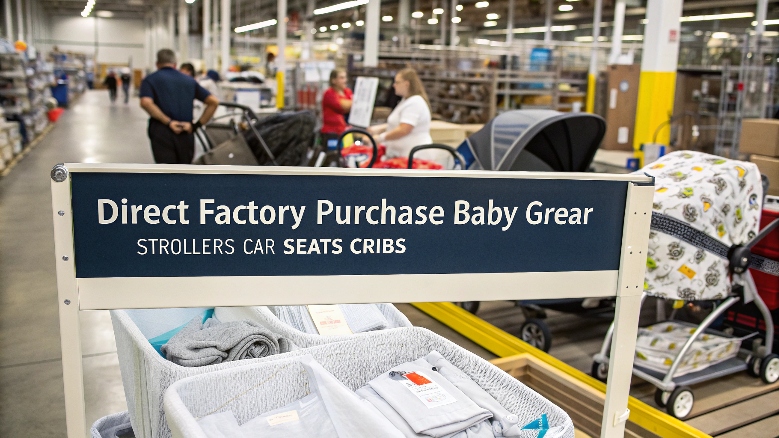
I once thought about directly importing some toys to sell. The price looked amazing. But then I started thinking about all the things that could go wrong if I did not visit the factory myself. What if the quality was not what I expected? What if they used materials that were not safe? This is a big concern, especially for products like strollers and high chairs. These are safety-critical items. Buying directly without seeing the factory in person means you are taking a bigger leap of faith. It is not impossible to do, but you need to be very careful and put many safeguards in place.
Risks of Not Inspecting On-Site
One big risk is quality control. Without visiting, you cannot see the production line or how the workers handle materials. You might receive products with defects or inconsistent quality. Communication can also be a challenge. Language barriers or time zone differences can lead to misunderstandings about specifications or delivery times. There is also the risk of product non-compliance. A factory might claim their products meet standards, but without independent verification, you cannot be sure. This can lead to products that cannot be sold in your market due to safety failures. Financial risks also exist, like payment fraud or issues with intellectual property. Your designs could be copied.
Mitigation Strategies
To reduce these risks, strong mitigation strategies are crucial. First, conduct thorough vetting of the factory. Ask for client references, check their online reputation, and verify all their certifications (like ISO 9001, ISO 14001, and social audits). Always request and carefully review pre-production samples. This lets you physically check the quality, materials, and features before mass production starts. Create clear and detailed contracts. These contracts must specify material requirements, quality standards, testing protocols, payment terms, and delivery schedules. Include clauses for non-compliance. Most importantly, use third-party quality control (QC) services. These services can perform inspections at various stages, such as during production (DPI) and before shipment (PSI). A third-party QC inspector acts as your eyes and ears on the ground, verifying quality and compliance before the products leave the factory. Maintain strong, consistent communication with the factory.
| Risk Category | Specific Risks | Mitigation Strategies |
|---|---|---|
| Quality & Production | Inconsistent quality, defects, material issues. | Pre-production samples, clear specifications, 3rd-party QC. |
| Compliance & Safety | Products not meeting safety standards. | Verification of certifications, 3rd-party testing. |
| Communication | Misunderstandings, delays. | Clear contracts, regular communication, use of translators. |
| Financial & Trust | Payment fraud, IP theft, reliability. | Vetting factory, references, secure payment methods. |
Conclusion
Making strollers and high chairs greener and safer means checking third-party product tests and ensuring factories have proper management system certifications. Direct factory purchases need careful planning and outside quality checks.

